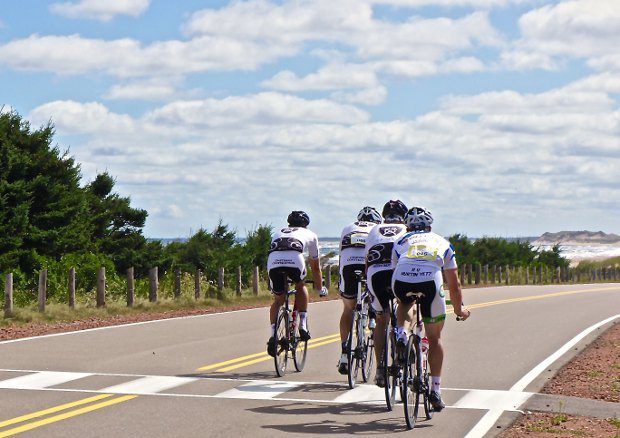Hacking the gran fondo: It’s the little fixes that will get you through the long distance


If you’re a cyclist who has to juggle work, family, a busy life and riding, you might be a bit worried about the 160-km gran fondo you have this summer. While many cyclists can complete 90 to 120 km rides on weekends, it’s more difficult to get in those longer rides often considered essential for endurance events. Instead of worrying about those distances, I believe the time-restricted athlete can focus on several things that can greatly affect performance. These include bike fit, bike maintenance, clothing, fuelling, hydration, pacing and bike skills. If you can improve in these areas, your chances of success on gran fondo day will be improved regardless of the training time you have. Getting a bike comfortable is a process because your body, goals and abilities change. A professional fit can help, but knowing how to adjust your own fit and swap parts reduces the chance of developing a major comfort issue or injury.
Likewise, you should also practise your mechanical skills. On race day, you’ll have more confidence with a clean, well-maintained bike. Knowing how to do basic on-road fixes will often avoid an otherwise lost finish. Bad weather can keep riders from starting or finishing an event. Be prepared. Invest in quality clothes. Embrace stormy days as added training experience. That outlook will help you stick to your training plan and provide a mental boost on race days with crummy weather. Shorts, chamois, gloves, bras and shoes are common items that will challenge an unprepared distance rider. Test all your equipment for the big ride well before the day.With the wheels still on the frame, wiggle each one laterally checking for play in the hub. Give each wheel a spin and listen for rumbles or grinding. By using the brake calipers as a guide, spin the wheels checking for trueness and how round they are. Next, with the wheels out of the frame, spin the axle with your fingers checking the bearing
Improper fuelling and hydration can ruin things. Spend time learning about and tracking what works. Like those foul-weather rides, fuelling research is another source of bonus training time. You’ll need to test your nutritional strategy at specific race intensities and volumes to track how you perform on it. Pacing also plays a role. It can influence fuel usage. You need to pay attention to your workout times and intensities so you can maximize your pace and adjust your fuelling. Aim to ride at the pace that matches your goal. I like to use 85 per cent of maximum heart rate as a limit for the first half to three quarters of the race. But you must find what works for you. Learn what a sustainable race pace feels like. Starting too hard and fuelling poorly will ruin a race regardless of fitness. If you pace and fuel properly, you’ll get the most out of your fitness.
Many athletes lack the key skills that would improve race times with little effort. Even less technical races require pack-riding, cornering and descending skills. Can you ride with one or no hands to grab a bar or take off a vest? Find resources online (such as my bikeskillsproject.com) or get advice on these skills through your club or coach. The return in fun, safety and race time makes the focus on skills an obvious training plan component for the time-restricted athlete. Most gran fondo riders can’t manage a 30-hour training week. But you can achieve a lot with five to eight hours per week, especially if you have rides with different intensities. A mix of workouts combined with all the other adjustments will multiply your training time and have you ready for the fondo.
